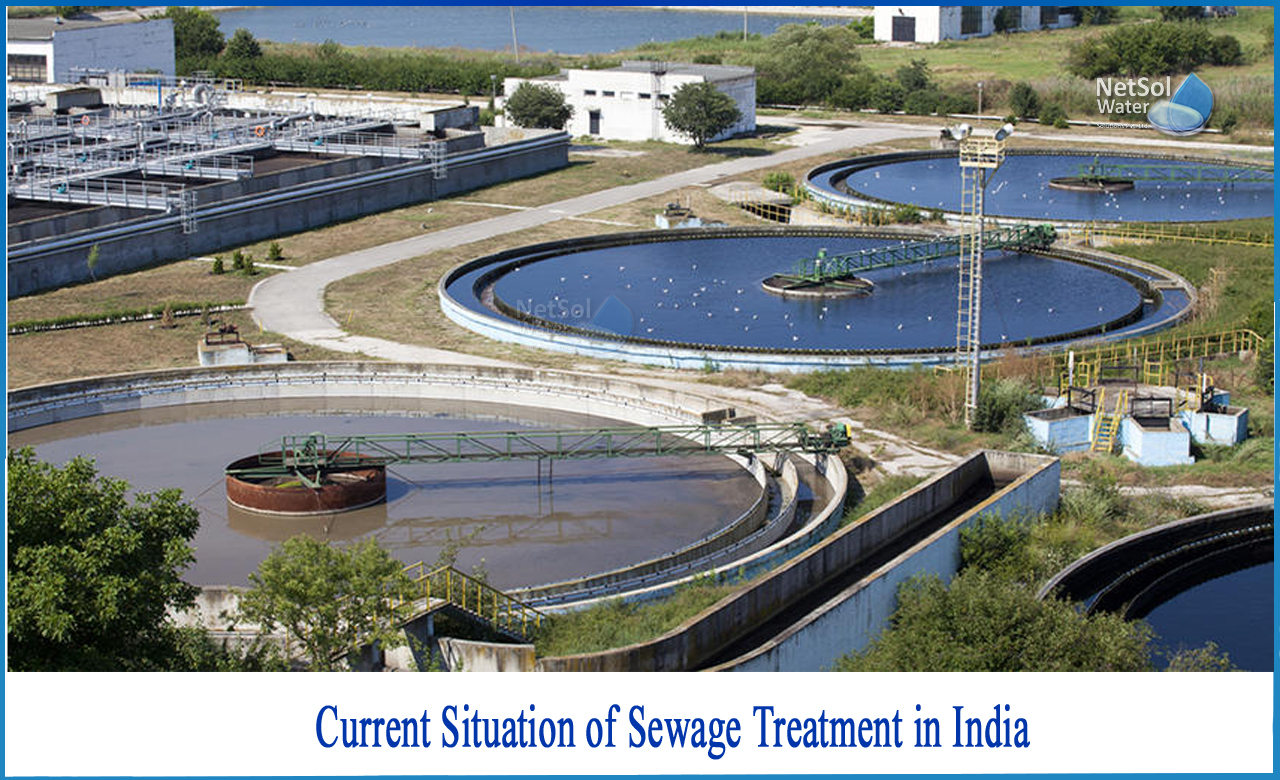What is the current status of sewage treatment in India?
According to the latest report from the Central Pollution Control Board (CPCB), wastewater treatment plants in India can treat just over one-third of the wastewater generated daily.
The recently published CPCB report was edited based on the information received from the state environmental protection agency about sewage treatment plants. Data was collected, edited and evaluated for installed capacity, operational capacity, and actual utilization.
According to the report,
India produced 72,368 MLD (1 million litres per day), while the installed capacity of the sewage treatment facility was 31,841 MLD (43.9 percent). Of this installed capacity, 26,869 MLD (84 percent) was available for development and operation. Of the total operational capacity, 20,235 MLD (75 percent) is the capacity actually used.
In other words, of the total 72,368 MLD wastewater generated daily, only 20,235 MLDs are treated!
The five states of Maharashtra, Gujarat, Uttar Pradesh, Delhi and Karnataka and the Union Territory (UT) account for 60% of the country's total installation capacity. These, along with five other states and UTs (Madhya Pradesh, Haryana, Punjab, Tamil Nadu and Rajasthan), account for 86% of total installed capacity.
There are no sewage treatment facilities in Arunachal Pradesh, Andaman and Nicobar Islands, Lakshadweep, Manipur, Meghalaya and Nagaland.
Some states, such as Bihar, have low capacity for sewage treatment facilities. However, on the operational side, the score is zero. Bihar produces 2,276 MLD of wastewater. The currently installed capacity is 10MLD for one STP. But it still doesn't work. Like that,Assam produces809MLD wastewater. However, more than one STP can be operated.
Chandigarh ranks first in the total amount of wastewater produced by the time it is actually treated. It has the operational capacity to generate 188 MLD of wastewater and process 271 MLD. The amount of waste actually processed is 235MLD (125% of the total).
According to the report:
The actual utilization rate is higher than the city's wastewater volume, suggesting that the possibility of wastewater from neighbouring cities and the possibility of mixing industrial wastewater with wastewater, cannot be ruled out. Alternatively, water can be supplied from an unrecorded water source.
Other states and UT show high scores in terms of the ratio of wastewater actually treated to wastewater produced. These are Delhi (72%), Punjab (72%), Haryana (71%), Gujarat (54%) and Maharashtra (47%). States such as West Bengal, Orissa and Jammu and Kashmir (UT) treat 27% of wastewater.
Reuse of wastewater
Reuse of treated wastewater is an issue that has not received much attention in many state government policy makings.
The Central Public Health and Environmental Engineering Organization reports that the treated wastewater can be reused for horticulture, irrigation, cleaning operations (roads, vehicles, trains), fire-fighting, industrial refrigeration, toilet flushing, and horticulture.
The reuse rate of treated wastewater is highest in Haryana (80%), followed by Pondicherry (55%), Delhi (50%), Chandigarh (35%), Tamil Nadu (25%) and Madhya Pradesh (20%) followed by Andhra Pradesh (5%).
The Government of Delhi has set a goal of increasing reuse from 12.5 percent to 60 percent. Reuse of treated wastewater can reduce water demand from water sources such as rivers, ponds, lakes and groundwater sources. CPCB reports that reducing raw water consumption contributes to the conservation of natural water resources.
Conclusion
The report of CPCB shows that there is lot of place for improvement in sewage management of our country as well as its re-use. Here comes the role of water treatment companies.
Netsol Water only believes in the goal of achieving sustainability and reusing wastewater to conserve fresh water resources. We are trying our best to develop technologies that would save and conserve water on a large scale.



